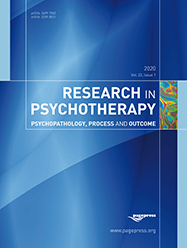How anxious did you feel during lockdown? The roles resilience, living environment, and gender play on the level of anxiety state during pandemic isolation

All claims expressed in this article are solely those of the authors and do not necessarily represent those of their affiliated organizations, or those of the publisher, the editors and the reviewers. Any product that may be evaluated in this article or claim that may be made by its manufacturer is not guaranteed or endorsed by the publisher.
Authors
In the unique context of the coronavirus disease 2019 (COVID-19) pandemic, researchers and clinicians alike drew attention to the risks involved by physical and social isolation for mental health. Factors like resilience, gender, urban/rural environment, or preexisting anxiety can impact anxious states produced by home forced isolation. Based on these, we assumed that: i) there are significant differences in the level of anxiety (state) during the pandemic, depending on the living area of the subjects; ii) gender plays a moderating role in the relationship between resilience and anxiety; and iii) anxiety (trait), experiential avoidance, resilience, and family connectedness, determine the level of anxiety (state). The MemoryLab team conducted the present study on 495 subjects (n=411 women, age between 18 and 65). Of these, 350 live in large and medium urban areas, 63 in small urban areas, and 82 in rural areas. As instruments, we used The State-Trait Anxiety Inventory (STAI 2.0), The Acceptance and Action Questionnaire 2 (AAQ-2), The Aggression Questionnaire (AQ), The Family Connectedness Questionnaire, and Connor-Davidson Resilience Scale 10 (CD-RISC-10), as well as the standard division of living areas according to community size. Data collection took place online during the spring peak of the pandemic. According to ANOVA analysis, people living in small urban areas have a higher level of anxiety. The difference is significant compared to those living in large and medium cities and villages. Gender has no moderating role in the relationship between resilience and the anxiety state. Also, experiential avoidance, anxiety (trait), and resilience play a significant role on the level of anxiety (state), measured during social isolation. The results could be an important indicator for understanding psychological mechanisms guiding interventions to support the communities effectively.
How to Cite

This work is licensed under a Creative Commons Attribution-NonCommercial 4.0 International License.






